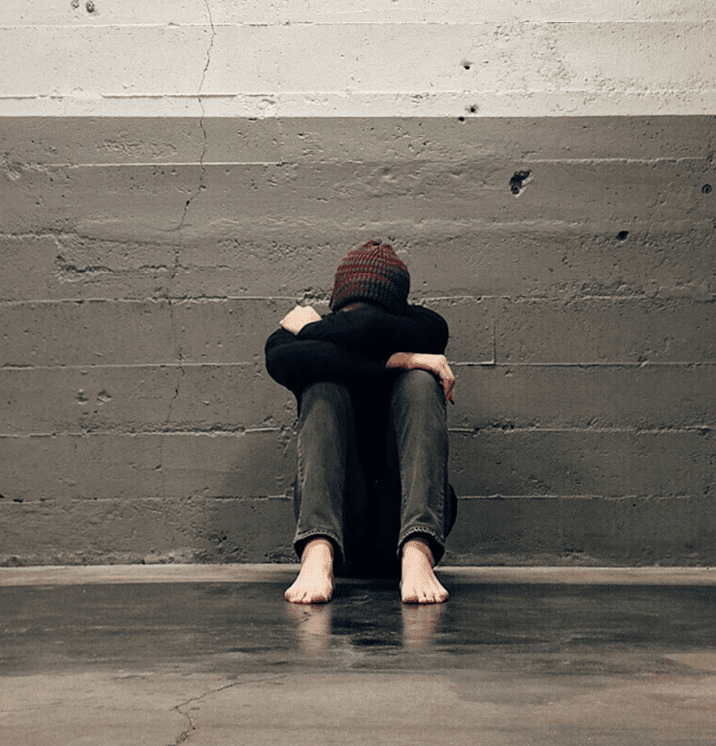Signs and Symptoms of Anxiety: How Does Anxiety Feel?
 can be complex, varied, and confusing. Anxiety is a condition frequently misunderstood, often lumped together simply with fear. Many people associate anxiety with specific fears—fear of public speaking, social situations, flying, or even open spaces. These specific fears can be intense, sometimes manifesting as phobias or triggering panic attacks.
can be complex, varied, and confusing. Anxiety is a condition frequently misunderstood, often lumped together simply with fear. Many people associate anxiety with specific fears—fear of public speaking, social situations, flying, or even open spaces. These specific fears can be intense, sometimes manifesting as phobias or triggering panic attacks.
However, anxiety extends far beyond these classic fears. It can affect people in surprising, subtle, and even baffling ways. Understanding the full spectrum of anxiety’s manifestations is critical to recognizing when it impacts your life or the life of a loved one.
What Does Anxiety Feel Like?
For many individuals, anxiety feels like an emotional overload. This might sound paradoxical, but even positive occasions—such as weddings, celebrations, or new opportunities—can feel overwhelming or stressful. Anxiety can distort joy and excitement, turning them into sensations of dread, pressure, or intense worry.
Surprisingly, anxiety doesn’t always feel emotional at all. Instead, it may present primarily as physical symptoms, making it difficult to associate the discomfort with an underlying anxiety disorder.
Common physical signs and symptoms of anxiety may include:
Dizziness or lightheadedness: Feeling unsteady or faint without an apparent cause.
Shortness of breath: Shallow or rapid breathing, often described as “air hunger.”
Frequent headaches or muscle tension: Persistent pain without a clear physical source.
Digestive issues: Nausea, stomach cramps, irritable bowel, or acid reflux that flare up during anxious states.
Heart palpitations or chest tightness: Sensations that may mimic heart or lung conditions.
Fatigue: Feeling exhausted even without physical exertion.
These symptoms can be bewildering and frightening, often leading people to seek help for physical ailments only, without connecting the dots to anxiety.
Anxiety’s Impact on Mental and Behavioral Functioning
Beyond the physical, anxiety often affects mental clarity and behavior in ways people might overlook or misinterpret:
-
Difficulty focusing or concentrating: You might find yourself unable to stay on one task, jumping rapidly from thought to thought.
-
Restlessness or agitation: An internal sense of unease that makes sitting still or relaxing feel impossible.
-
Irritability or mood swings: Heightened emotional reactivity that makes small problems feel overwhelming.
-
Sleeplessness or disturbed sleep: Difficulty falling asleep or staying asleep due to racing thoughts or physical tension.
These cognitive and emotional symptoms can sometimes masquerade as other issues such as attention-deficit disorders, depression, or stress-related conditions, complicating diagnosis and delaying appropriate treatment.
Why Are Anxiety Signs and Symptoms Often Misdiagnosed?
Anxiety’s diverse manifestations contribute to the challenge of proper diagnosis. Because many signs and symptoms overlap with other medical or psychiatric conditions, anxiety is frequently overlooked or misattributed.
For example:
A person experiencing chest tightness and shortness of breath might be evaluated extensively for heart or lung disease.
Chronic headaches and digestive complaints could lead to multiple specialist visits without any relief.
Difficulty concentrating and restlessness might result in a diagnosis of an attention disorder without considering anxiety’s role.
When the root anxiety diagnosis is missed, treatments targeting physical symptoms alone often fail to bring lasting relief and can sometimes even exacerbate discomfort by increasing stress or confusion.
The Importance of Accurate Diagnosis for Anxiety
Because of this diagnostic complexity, the very first step in treating anxiety effectively is obtaining an accurate diagnosis from a qualified specialist. This may involve:
A detailed clinical interview exploring mental health history, symptom patterns, lifestyle factors, and stressors.
Ruling out physical conditions that can mimic anxiety symptoms.
Utilizing standardized screening tools to assess anxiety severity and subtype.
Working closely with you to differentiate anxiety from related disorders such as depression or PTSD.
This thorough diagnostic process not only clarifies your condition but also fosters trust and collaboration between you and your healthcare provider. Importantly, it restores hope—a critical element often overlooked—in knowing that resolution is possible.
 Root Cause Analysis: The Next Step Toward Relief
Root Cause Analysis: The Next Step Toward Relief
Once a diagnosis of anxiety is confirmed, the next step is identifying the specific causes or triggers of your anxiety. Anxiety rarely exists in a vacuum; it often arises as a response to a mix of biological, psychological, and environmental factors. Some common contributors include:
Genetic predisposition or family history of anxiety disorders.
Neurochemical imbalances affecting mood regulation.
Traumatic life events or ongoing stressors.
Lifestyle factors like poor sleep, nutrition, or lack of exercise.
Medical conditions or medications that may exacerbate anxiety.
Understanding your unique anxiety profile allows the development of a targeted, personalized treatment plan that addresses the underlying causes, not just the surface symptoms.
Developing a Personalized Treatment Plan
With accurate diagnosis and root cause analysis in hand, a structured and customized treatment plan can be established. This plan might incorporate:
-
Psychotherapy: Cognitive-behavioral therapy (CBT) and other modalities to reshape unhelpful thought patterns and improve coping skills.
-
Lifestyle modifications: Sleep hygiene, mindful breathing, meditation, and exercise to improve emotional resilience.
-
Medication management: When appropriate, medications can help rebalance brain chemistry and relieve severe symptoms safely.
-
Holistic therapies: Acupuncture, yoga, herbal supplements, and nutritional support may provide additional benefits.
-
Patient education: Empowering you with knowledge about the signs and symptoms of anxiety to recognize early warning signs and manage flare-ups effectively.
Clear benchmarks to monitor progress provide motivation and ensure you stay on a confident path toward relief.
Moving Forward with Clarity and Confidence

Recognizing and understanding the full range of signs and symptoms of anxiety is empowering. By breaking through the confusion of physical and emotional manifestations, you gain the tools needed to seek an accurate diagnosis and effective treatment.
You deserve compassionate care at every stage—from initial evaluation to tailored therapy—that honors your experience and supports your journey toward well-being.
Conclusion: You’re Not Alone—Help is Available
Anxiety may sometimes feel invisible, confusing, or isolating, but it is a treatable condition with many effective solutions. Early recognition of its varied signs and symptoms of anxiety sets the foundation for successful intervention and renewed quality of life.
Please book your free consultation and come and see us


 Root Cause Analysis: The Next Step Toward Relief
Root Cause Analysis: The Next Step Toward Relief


